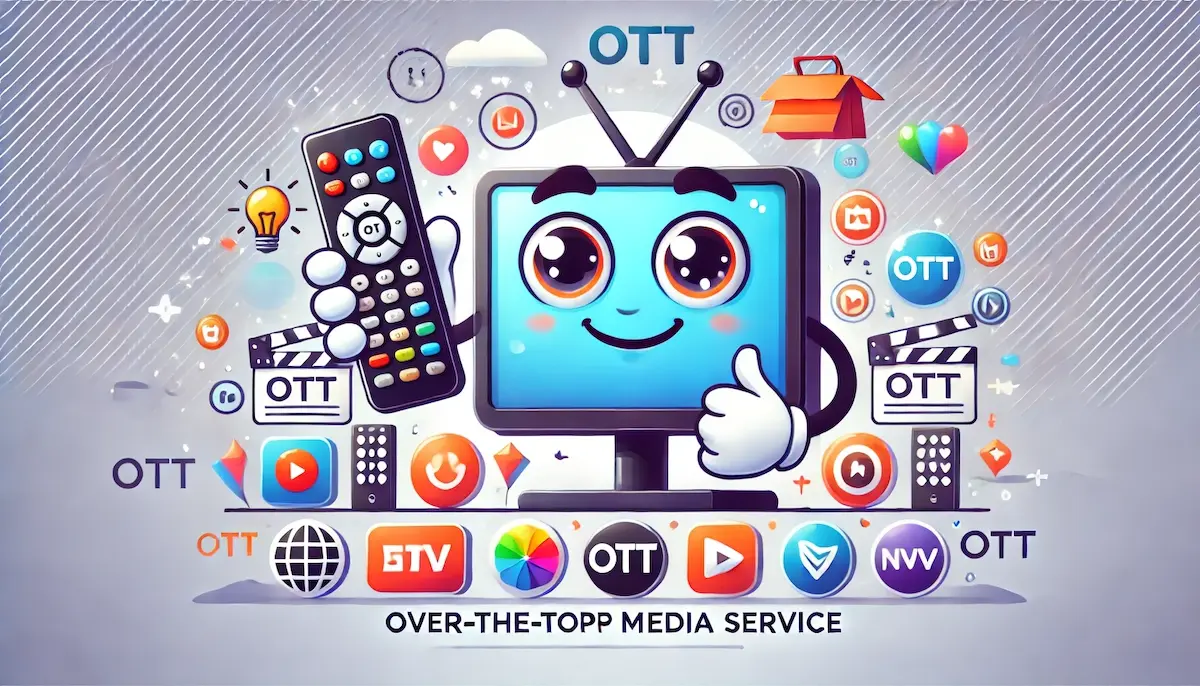OTT (Over-the-Top) media services refer to the delivery of video, audio, and other media content directly to consumers via the internet, bypassing traditional cable, satellite, and broadcast television platforms. These services have revolutionized how we consume media, offering greater flexibility, convenience, and a wide range of content options.
Key Features of OTT Media Services
Internet-Based Delivery
OTT services are delivered over the internet, allowing users to access content on various devices such as smartphones, tablets, smart TVs, and computers. This internet-based delivery enables users to watch content anytime, anywhere, as long as they have an internet connection.
On-Demand Content
One of the primary attractions of OTT services is the availability of on-demand content. Users can choose what they want to watch and when they want to watch it, as opposed to adhering to a scheduled broadcast. This flexibility has significantly changed viewing habits, allowing for binge-watching and personalized viewing experiences.
Subscription Models
Most OTT services operate on a subscription model, where users pay a monthly or annual fee to access a library of content. Examples include Netflix, Hulu, and Disney+. Some services also offer a free tier with ads, such as Peacock and Tubi.
Original and Exclusive Content
OTT platforms often produce and distribute original content that is exclusive to their service. This strategy not only attracts subscribers but also differentiates them from competitors. Popular examples include Netflix’s “Stranger Things” and Amazon Prime Video’s “The Marvelous Mrs. Maisel.”
Multi-Device Support
OTT services support streaming on multiple devices, including smartphones, tablets, laptops, and smart TVs. This multi-device compatibility ensures that users can enjoy content seamlessly across different screens.
Popular OTT Services
Netflix
Netflix is a pioneer in the OTT space, offering a vast library of movies, TV shows, documentaries, and original programming. With a subscription-based model, Netflix provides ad-free streaming and allows users to download content for offline viewing.
Amazon Prime Video
Amazon Prime Video is part of the Amazon Prime subscription package, which includes other benefits like free shipping and access to Amazon Music. Prime Video offers a wide range of content, including original series, movies, and licensed TV shows.
Hulu
Hulu provides a mix of current-season TV episodes, classic shows, movies, and original content. It offers both ad-supported and ad-free subscription plans, catering to different user preferences.
Disney+
Disney+ is a subscription-based streaming service that features content from Disney, Pixar, Marvel, Star Wars, and National Geographic. It has quickly become a major player in the OTT market with its extensive library of family-friendly content and popular franchises.
HBO Max
HBO Max combines content from HBO with a wide variety of movies, TV shows, and original programming. It offers a comprehensive library that includes blockbuster films, classic series, and exclusive originals.
YouTube
YouTube, while primarily a user-generated content platform, also offers YouTube Premium, a subscription service providing ad-free access to all videos, original content, and music streaming.
Benefits of OTT Media Services
Convenience and Flexibility
OTT services provide unmatched convenience and flexibility, allowing users to watch content on their own schedule and on their preferred devices. This on-demand nature fits seamlessly into busy lifestyles and diverse viewing preferences.
Cost-Effectiveness
Compared to traditional cable and satellite TV subscriptions, OTT services often offer more affordable options. With various pricing tiers and bundles, users can choose plans that suit their budgets and viewing habits.
Diverse Content Library
OTT platforms offer a vast and diverse library of content, catering to different tastes and demographics. From mainstream blockbusters to niche indie films, there is something for everyone on these platforms.
Personalized Viewing Experience
Many OTT services use algorithms to recommend content based on user preferences and viewing history. This personalization enhances the user experience by making it easier to discover new shows and movies that align with individual interests.
Global Accessibility
OTT services are available worldwide, providing access to content that might not be available through local TV channels. This global reach allows users to enjoy international films, TV shows, and documentaries.
Challenges of OTT Media Services
Content Licensing and Rights
Securing content licenses and rights can be complex and costly for OTT providers. Negotiating agreements with studios, networks, and production companies is essential to maintain a diverse content library.
Competition
The OTT market is highly competitive, with numerous players vying for subscribers. Differentiating through exclusive content, user experience, and pricing strategies is crucial for gaining and retaining customers.
Bandwidth and Internet Speed
High-quality streaming requires a stable and fast internet connection. In areas with limited bandwidth or slow internet speeds, users may experience buffering and lower video quality.
Piracy and Security
Piracy remains a significant challenge for OTT services, as unauthorized distribution of content can impact revenue and intellectual property rights. Implementing robust security measures is essential to protect content from being pirated.
Subscriber Retention
With multiple subscription options available, retaining subscribers can be challenging. OTT providers must continuously innovate, offer fresh content, and provide excellent customer service to keep users engaged.
The Future of OTT Media Services
The future of OTT media services looks promising, with continued growth and innovation on the horizon. Key trends include:
- Original Content Production: OTT platforms will continue investing in original content to attract and retain subscribers.
- Integration with Smart Devices: Enhanced integration with smart home devices and voice assistants will improve the user experience.
- Expansion into Emerging Markets: OTT providers will focus on expanding their reach into emerging markets with localized content and affordable pricing.
- Interactive and Immersive Content: The development of interactive and immersive content, such as virtual reality (VR) and augmented reality (AR) experiences, will offer new ways to engage audiences.
Blockfine thanks you for reading and hopes you found this article helpful.
